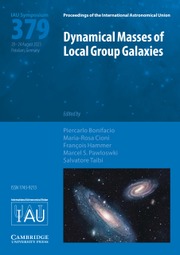No CrossRef data available.
Article contents
Origins of the north-south asymmetry in the ALFALFA H i velocity width function
Published online by Cambridge University Press: 30 October 2025
Abstract
The number density of extragalactic 21-cm radio sources as a function of their spectral line-widths – the H i width function (H i WF) – is a tracer of the dark matter halo mass function. The ALFALFA 21-cm survey measured the H i WF in northern and southern Galactic fields finding a systematically higher number density in the north; an asymmetry which is in tension with Λ cold dark matter models which predicts the H i WF should be identical everywhere if sampled in sufficiently large volumes. We use the Sibelius-DARK N-body simulation and semi-analytical galaxy formation model GALFORM to create mock ALFALFA surveys to investigate survey systematics. We find the asymmetry has two origins: the sensitivity of the survey is different in the two fields, and the algorithm used for completeness corrections does not fully account for biases arising from spatial galaxy clustering. Once survey systematics are corrected, cosmological models can be tested against the H i WF.
Keywords
Information
- Type
- Poster Paper
- Information
- Proceedings of the International Astronomical Union , Volume 19 , Symposium S379: Dynamical Masses of Local Group Galaxies , December 2023 , pp. 324 - 328
- Creative Commons
- This is an Open Access article, distributed under the terms of the Creative Commons Attribution licence (https://creativecommons.org/licenses/by/4.0/), which permits unrestricted re-use, distribution and reproduction, provided the original article is properly cited.
- Copyright
- © The Author(s), 2025. Published by Cambridge University Press on behalf of International Astronomical Union


